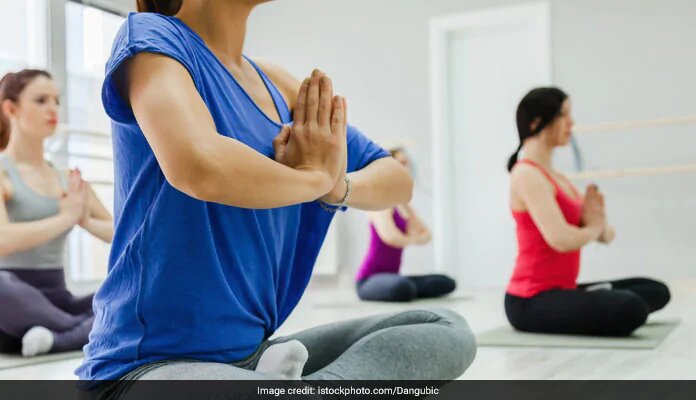Whether you’re just starting out with yoga or you’re a seasoned practitioner, these yoga poses and exercises will help you improve your posture, increase flexibility, and reduce pain. There are many different kinds of yoga, and each one targets a different part of the body.
Cat/cow stretch
Whether you are just starting yoga or you are a seasoned practitioner, the cat/cow stretch is an excellent way to relieve stress and pain. It is also beneficial for maintaining healthy spines and preventing back injuries. Use a Cenforce tablet to treat your physical problems.
The Cat/Cow stretch involves alternating between flexion and extension. Flexion is bending of the spine while extension involves arching of the low back. This stretch can be done with or without other exercises.
It is an excellent warm-up stretch. It can also be added to a routine during the day. It helps to loosen up muscles and increase blood flow to the spine.
It is a very beginner-friendly exercise. It is also a great way to protect your neck from injury. It can be used in conjunction with other exercises to help stretch your entire spine.
It is recommended that you consult a health care professional before beginning a yoga program. You should avoid Cat and Cow poses if you have any back injuries. If you have knee or wrist pain, you may need to modify the sequence.
It is important to take a deep breath during the Cat/Cow stretch. You should also move with your arms in an immobile manner. You may be able to stretch by pressing your hands against a table or desk. You should also keep your head in a neutral alignment with your spine.
The cat/cow stretch is an easy yoga pose that can be done anytime. It can be added to your morning routine to help relieve stress. It can also be used as a moving meditation.
The Cat/Cow stretch is a simple yoga exercise that helps improve spine mobility. It can also help to relieve pain in the lower back and sciatica.
Downward-facing dog pose
Using the Downward Dog pose to reduce pain is a great way to relieve tension and increase flexibility. The pose provides a great stretch for the hamstrings, buttocks, and calves. It also helps to improve your posture and reconnect with your breath.
The Downward Dog is a great posture to begin any yoga practice. It provides a deep stretch for the hamstrings, buttocks, calves, and arms. It also helps to strengthen the muscles in the shoulders and upper back. It’s ideal for easing back pain and building core strength.
In order to get the most out of the pose, you need to pay close attention to the details. In particular, pay attention to how far your fingers and toes are from each other. If they are too far apart, you might not be able to reach your heels down to the floor.
You should also pay attention to your shoulder positioning. In the downward dog, you should make sure your shoulders are drawn away from your ears. This will help prevent your shoulder blades from collapsing.
If you are prone to lower back pain, make sure to avoid hyperextending your joints. You should also avoid locking your elbows. You can use a foam wedge to take weight off your wrists.
The downward dog is a great posture to get into if you are suffering from a strained shoulder or back. It can also help alleviate pain from sinusitis. In addition, it can help to prevent osteoporosis.
You can practice this pose anywhere you have some space to stretch. You can even take a rest in the pose during your yoga class. You can hold this pose for five minutes.
Backbend
Practicing yoga can be an effective way to relieve pain and discomfort in the back. It also increases flexibility, strength and mobility. Backbends are a great way to relieve pain, if done correctly. Backbends can also reduce muscle stiffness and increase mobility.
There are many yoga stretches to help with back pain. The traditional forward bend, for instance, is an excellent way to stretch the chest, abdomen and shoulders.
The downward dog is another great backbend. It gently stretches the muscles in the low back. It is also good for relieving headaches.
The Camel pose is a great stretch for the upper back, as well as the neck. It helps to stretch the shoulder blades toward each other. It can be done as an impromptu stretch or as a part of a yoga routine.
The tabletop pose is a great stretch for the back, chest and spine. It starts with the forehead resting on a yoga block. It should be held for at least 5 to 10 breaths.
The downward dog, however, is a better stretch for the hamstrings and hips. It is good for relieving back pain, but also relieves stress and headaches.
The seated forward bend is also a good stretch for the chest, shoulders, and spine. It is a good exercise to use to warm up.
The Cobra pose is a great stretch for the front of the body. It requires a firm but flexible core, and correct alignment. It is also a good stretch for the hamstrings and the calves. It is best to consult a yoga instructor to ensure that you are doing it properly.
The upward forward bend is a good stretch for the chest. It also helps to relieve tension in the shoulders and arms.
Sphinx pose
Taking time to practice Sphinx pose yoga stretch can help to reduce pain in your lower back. The pose works to improve spinal mobility and spinal curvature. It stretches the psoas muscles, buttocks, and hips. It also stimulates the digestive system and nervous system. It is also excellent for strengthening the lower back.
The Sphinx Pose is a yoga stretch that works the back and abdominal muscles. It also strengthens the spine and chest. It is a preparatory pose for more advanced backbends.
The Sphinx pose is one of the gentlest backbends and has many benefits. It helps relieve back pain, stimulates the digestive system, and energizes the body. It is also good for improving lung capacity. Performing this pose on a regular basis can also reduce fatigue. It improves the posture of the back and spine and is especially helpful for those with chronic back pain.
Before trying any yoga stretch to reduce pain, be sure to consult a doctor. Some poses can increase your risk of injury. Also, if you are pregnant, be sure to consult a doctor before starting any yoga poses.
This yoga pose is often used to stretch the psoas muscles. It also stretches the hips, buttocks, and sacrum. If you suffer from sciatica, this pose may help relieve the pain.
To do the Sphinx pose yoga stretch, start with your hands on the floor behind you. Then, roll your outer thighs inward. You may also hold your leg up for about 15-20 seconds. You should be breathing 4-6 breaths initially.
To help with the stretch of the chest, use a pillow. You may also use a bolster beneath your arms.
Rotator cuff stretch
Whether you’re looking for a yoga stretching routine for rotator cuff pain, or just looking to increase your overall strength, there are a few simple poses you can try to increase your flexibility. You can also use these stretches to help improve your posture. Having a proper posture will reduce stress on the shoulder structures and increase your range of motion.
If you’re looking for a quick and easy stretch to help alleviate rotator cuff pain, try the downward facing dog. This pose stretches the shoulders, while strengthening the muscles in the back. You can also modify the pose by placing your palms on a wall.
The wall stretch is a great way to open up circulation to the entire area. It feels a little different from many muscle stretches. It may feel like you’re stretching your arm out to the wall, but in fact, you’re actually stretching out the tougher fascial tissue that surrounds the rotator cuff.
The tabletop pose is also a good yoga stretching routine for rotator cuff injuries. This pose is a simple, weight-bearing exercise that activates the rotator cuff and strengthens the rest of the shoulder complex. It also makes it easy to put on a jacket, scrub your back in the shower, or fasten a bra.
You can also stretch your rotator cuffs by lying flat on your back. This helps strengthen the muscles in your shoulder complex, and may help you avoid a rotator cuff injury in the future.
The cross-body stretch is another simple yoga stretching routine for rotator cuff muscles. This stretch is a good way to get your entire body involved, and it may help you maintain internal rotation of your shoulder joint. You should be able to hold it for about 30 seconds.
Also Visit: medzsite.com



